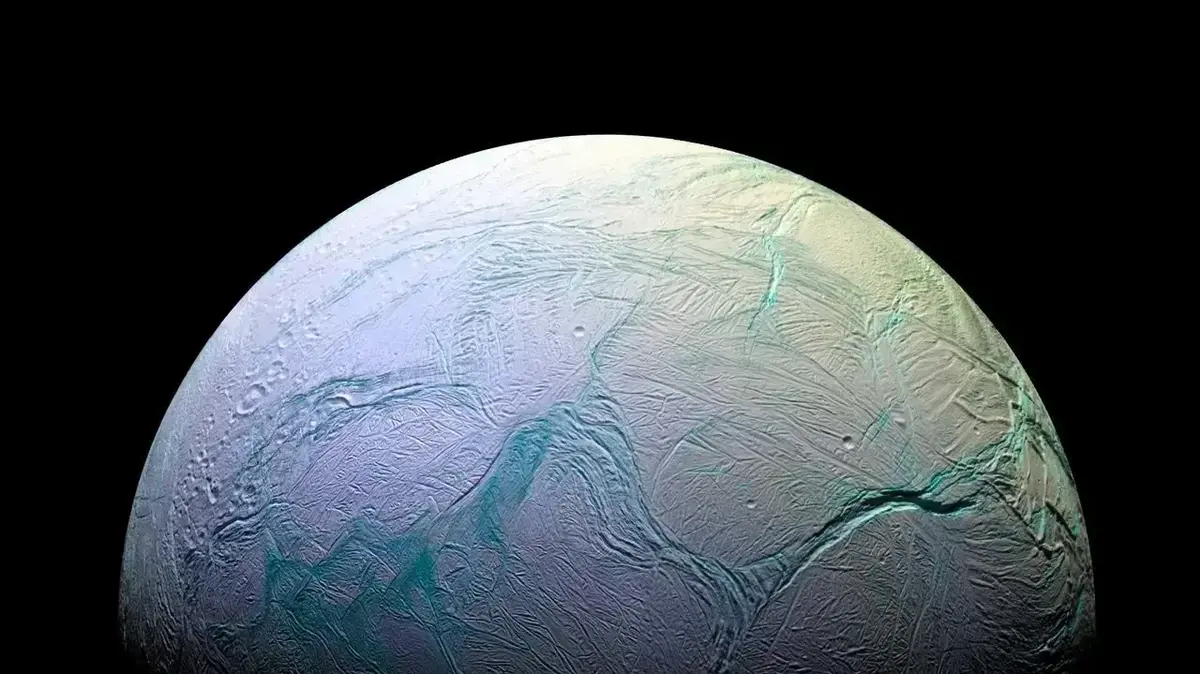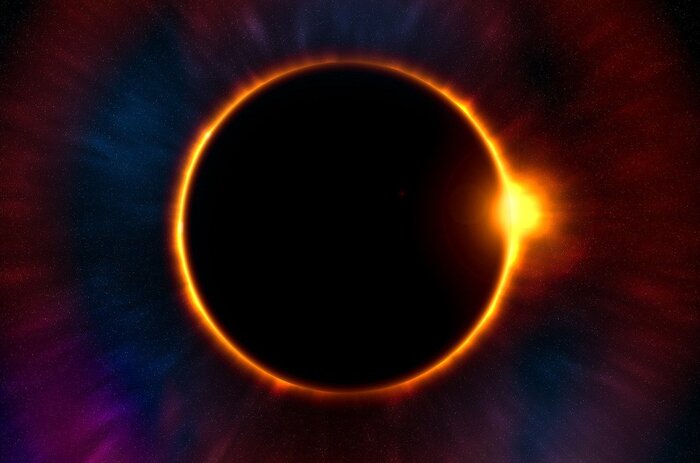In the red corner, Jupiter, the largest planet orbiting our Sun, which shaped our solar system with its gravitational mass.
In the blue corner, Saturn, the magnificent ringed world with bewildering hexagonal storms at the poles.
These two giant worlds have arrived late to their fight for satellite supremacy. But now the fight over which planet has more moons in its orbit has tilted decisively in Saturn's favor.
This month, the International Astronomical Union will recognize another 62 moons of Saturn from a number of objects discovered by astronomers. With these small objects, Saturn will have 145 moons, eclipsing Jupiter's 95.
"They both have a lot of moons," said Scott Sheppard, an astronomer at the Carnegie Institution for Science in Washington, D.C. But Saturn "seems to have many more" for reasons that are not fully understood.
NASA's Dragonfly mission to Titan, one of Saturn's moons. Photo: NASA
Saturn's newly discovered moons look nothing like the bright object in Earth's night sky. They are irregularly shaped, like potatoes, and no more than a mile or two in diameter. They also orbit far from the planet, at between 10 and 29 million kilometers, compared to larger moons, such as Titan, which orbit mostly within 1.6 million kilometers of Saturn.
However, these small irregular moons are fascinating in themselves. They are mostly clustered together and may be remnants of larger moons that fragmented while orbiting Saturn.
"These moons are the key to understanding some of the big questions in the solar system," said Bonnie Buratti of NASA's Jet Propulsion Laboratory in California and deputy science director for the upcoming Europa Clipper mission to Jupiter. "They have the fingerprints of events that took place in the early solar system."
The growing number of moons also highlights potential debates about what constitutes a moon.
"The simple definition of a moon is that it is an object orbiting a planet," Sheppard explained. The size of the object, for the moment, does not matter.
Jupiter is the largest planet in the Solar System, but lost the throne in number of moons. Photo: EFE
The new moons were discovered by two groups, one led by Sheppard and the other, more recently, by Edward Ashton of the Institute of Astronomy and Astrophysics at Academia Sinica in Taiwan. In the mid-2000s, Sheppard's group used Hawaii's Subaru telescope to search for more moons around Saturn.
In March, Sheppard was also responsible for finding 12 new moons of Jupiter, which placed it temporarily ahead of Saturn in the race to be the largest accumulator of moons. Apparently, that record was short-lived.
Between 2019 and 2021, Ashton's group used the Canada France Hawaii telescope, a neighbor to the Subaru telescope on Mauna Kea, to search for more of Saturn's moons and verify some of Sheppard's discoveries. For a moon to be authenticated, it must be sighted several times to "be sure that the observations correspond to a satellite and not just an asteroid that happens to be close to the planet," explained Mike Alexandersen, responsible for official confirmation of moons at the International Astronomical Union.
Most of Saturn's irregular moons orbit the planet in what astronomers call the Inuit, Norse and Gallic groups. The objects in each group can be remnants of larger moons, up to 240 kilometers in diameter, that previously orbited Saturn but were destroyed by asteroid or comet impacts or by collisions between two moons. "This shows that there is a great history of collisions around these planets," Sheppard said.
Those original moons may have been captured by Saturn "very early in the solar system," Ashton said, perhaps in the first few hundred million years after its formation 4.500 billion years ago. However, not all orbit in these groups, since a few rebel moons orbit retrograde, that is, in the opposite direction to the orbits of the other moons.
Questions about the "new" moons
"We don't know what happens to those retrograde moons," Sheppard said. Ashton suspects they could be remnants of a more recent collision.
It is difficult to know more about the new moons because of their small size and distant orbits. They appear to be a special class of object, different from asteroids that formed in the inner solar system and comets in the outer solar system. But not much else is known.
"These objects could be unique," Sheppard said. "They could be the last remnants of what formed in the region of the giant planets, probably very ice-rich objects."
NASA's Cassini spacecraft managed to observe about two dozen moons around Saturn until its disappearance in 2017. Although not close enough to study them in detail, the data allowed scientists to "determine the rotation period" of some of the moons, the spin axis and "even the shape," said Tilmann Denk of the German Aerospace Center Berlin, who led the observations. Cassini also found abundant ice on the surface of one of the largest irregular moons, Phoebe.
More detailed observations of Saturn's tiny moons could offer scientists a window into a tumultuous era of the early solar system. During this period, collisions were more frequent and planets disputed their position. Jupiter is thought to have migrated from the vicinity of the Sun to its current orbit. "This provides additional information about the formation of the solar system," Denk said.
However, the irregular moons we see so far could be just the beginning. "We estimate that there are potentially thousands" around Saturn and Jupiter, Ashton explained. Uranus and Neptune may also have many of these irregular moons, but their enormous distance from the Sun makes them difficult to discover.
Saturn, despite being smaller than Jupiter, appears to have many more irregular moons. It is possible that it has three times more than Jupiter, with a size of about three kilometers. The reason is unclear, according to Ashton.
Jupiter's original moons may have tended to be larger and less likely to break apart. Or Saturn may have captured more objects in its orbit than Jupiter. Or it may be that Saturn's moons had orbits more likely to overlap and collide, producing smaller, more irregular moons.
Sea cual sea la razón, el resultado está claro. Júpiter está contra las cuerdas y es poco probable que recupere su título de planeta con más lunas. Conforme mejore la capacidad de los astrónomos para encontrar satélites cada vez más pequeños, "Saturno ganará por goleada", asegura Alexandersen. "Creo que ya no hay competencia".
The New York Times. Especial
Traducción: Elisa Carnelli
PS
Mirá también









